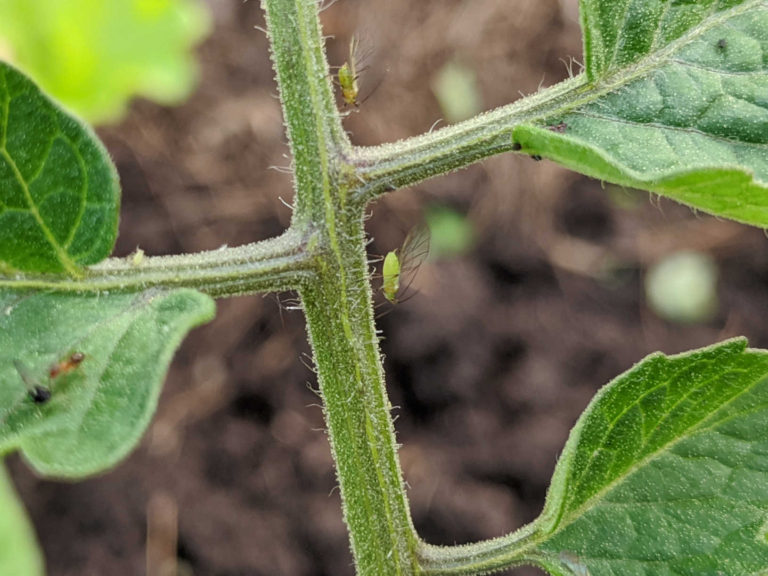Aphid
Insect Identification
Images
Damage
Aphids are very common insects and are found on most plants. They are plant suckers which do exactly that: pierce and suck out the plant’s juices. Just because you see them does not mean the plant is being noticeably affected. However, as the numbers of aphids increase, damage to the plant can occur.
Affected Plants
Nearly all plants
Management
Control techniques are listed in order of effectiveness.
Water spray
- Aphids are easily removed by sharp streams of water. Find a nozzle for a garden hose that produces the strongest spray, ideally one that is somewhat painful when aimed at your hand. Aim the nozzle at the plant and hit it with the stream either parallel with the ground or aiming slightly upwards to prevent soil from splashing up on the plant. Make sure to hit the bottoms of the leaves with water.
- Always spray in the morning before the sun is strong so the plants have a chance to dry. Never spray in the evening as this increases the likelihood of disease
- Spray the plants multiple times to ensure most aphids have been removed
Natural Enemies
- Natural predators can be very effective at controlling aphids but due to the speed at which aphids reproduce, adequate control may take a while. Before introducing beneficials to the garden, it is advised to reduce the numbers of aphids as much as possible with multiple applications of water sprays.
- Once your beneficial insects have arrived from a reputable source, it is best to introduce them to the garden as soon as possible. Begin by spraying the plant with water in the evening as this increases the likelihood the beneficials will remain on the plant. Wait 30 minutes and then introduce them to plants.
- The two most common beneficial insects are shown below. Please order only from reputable sources.
- Lady Beetles
- Lacewings
Insecticides
- Pesticides generally aren’t necessary when dealing with aphids but may be required if multiple attempts at physical controls have been unable to reduce their numbers. Closely follow the instructions included with each pesticide.

